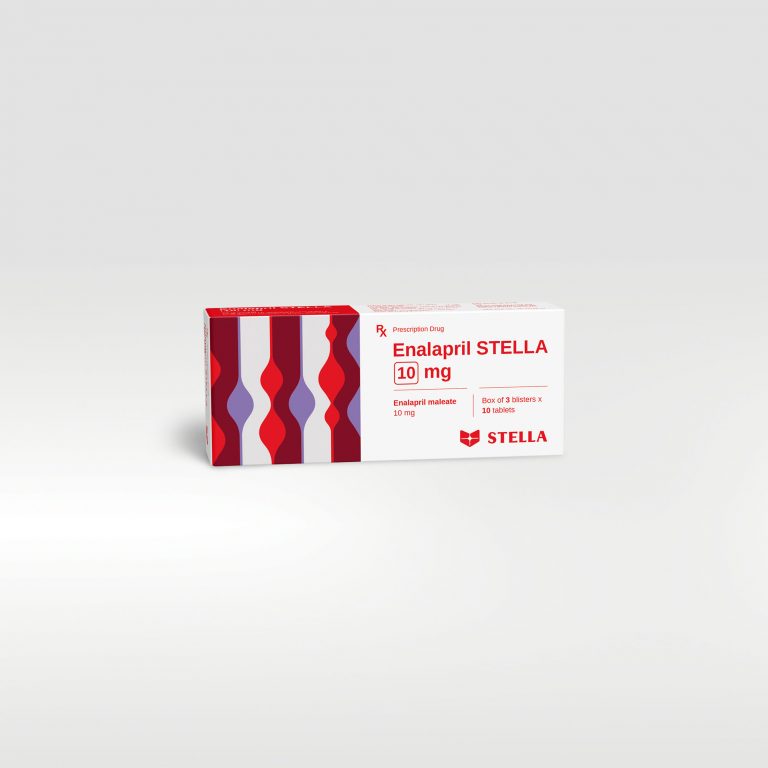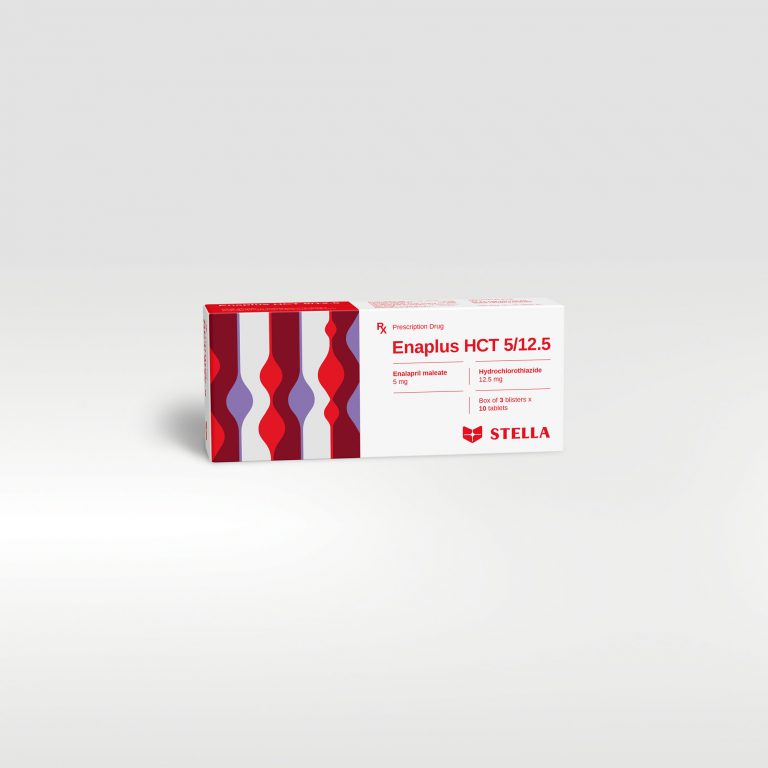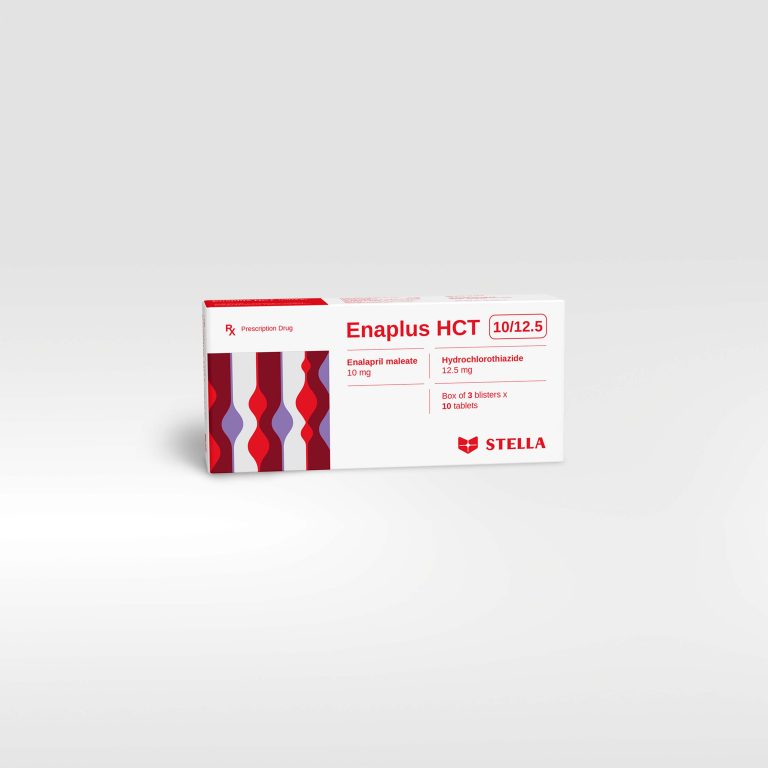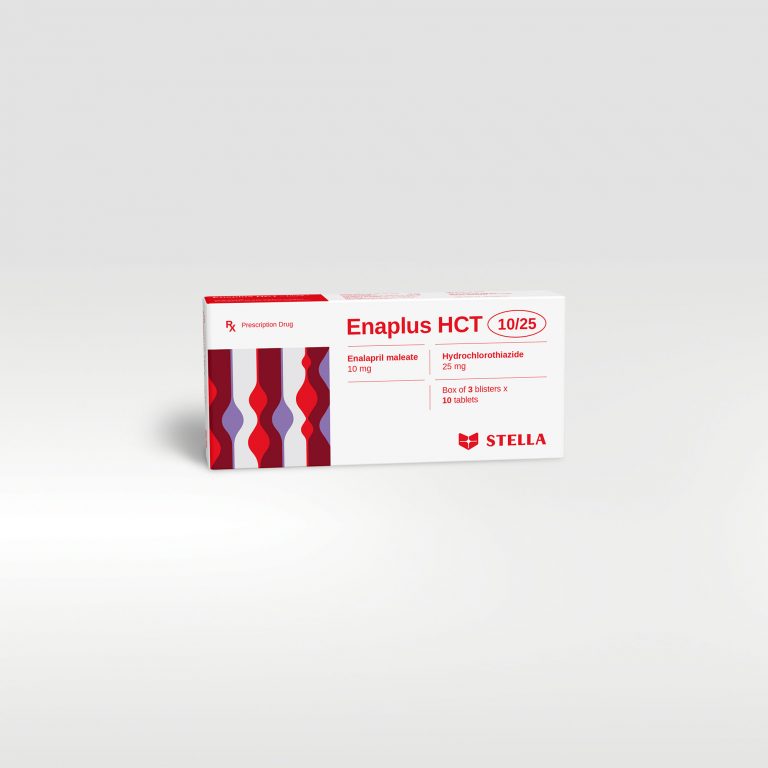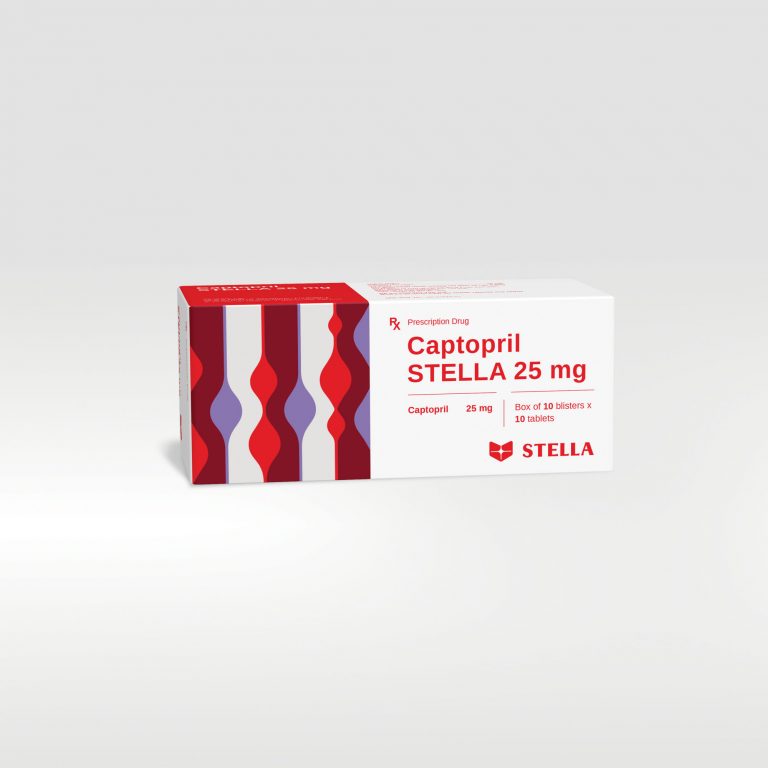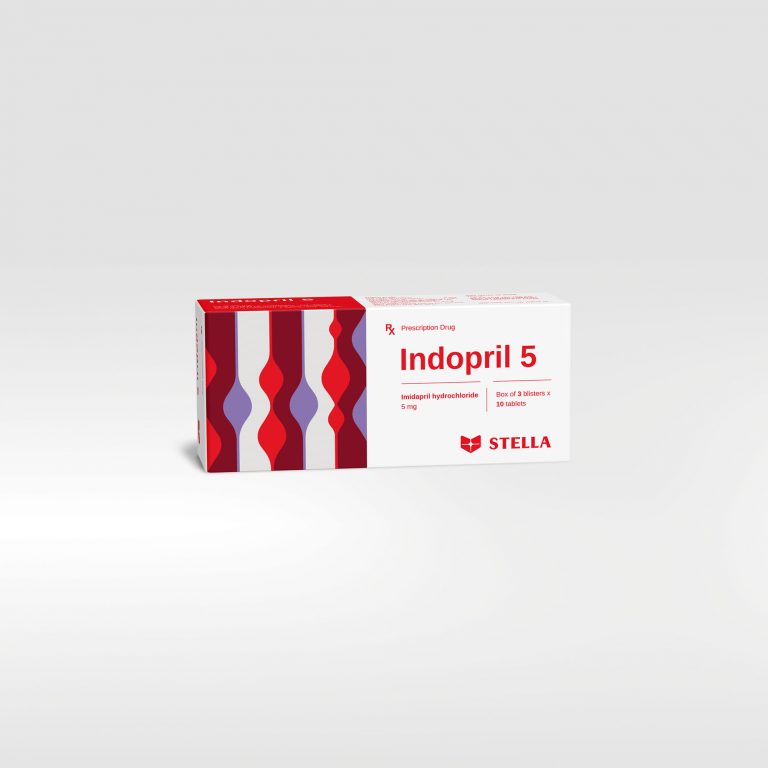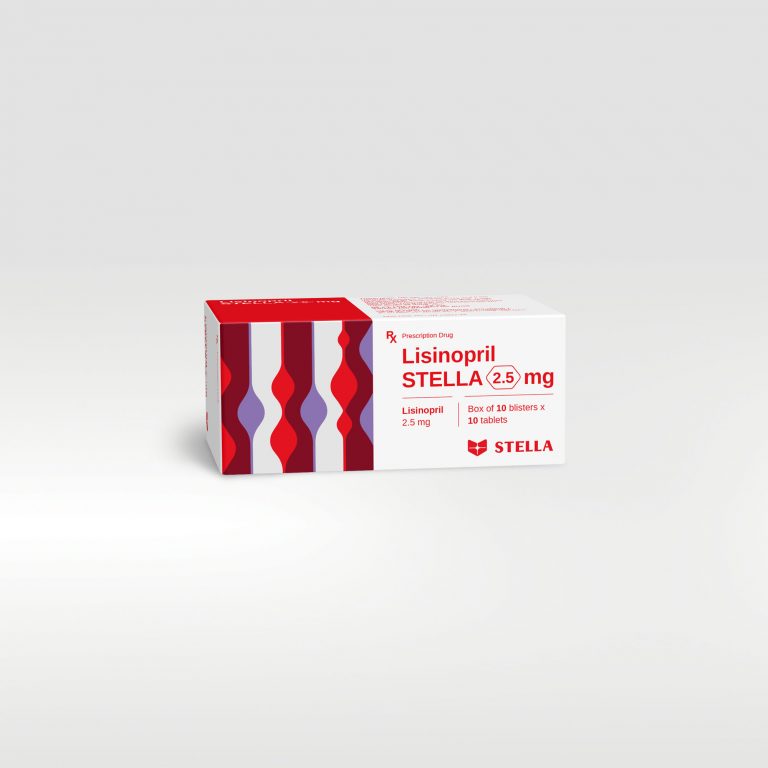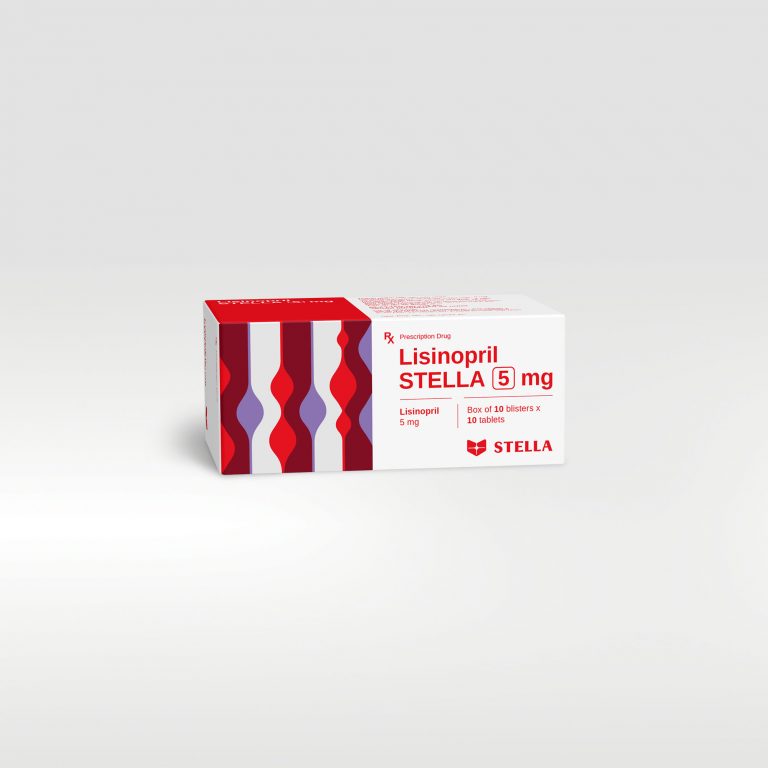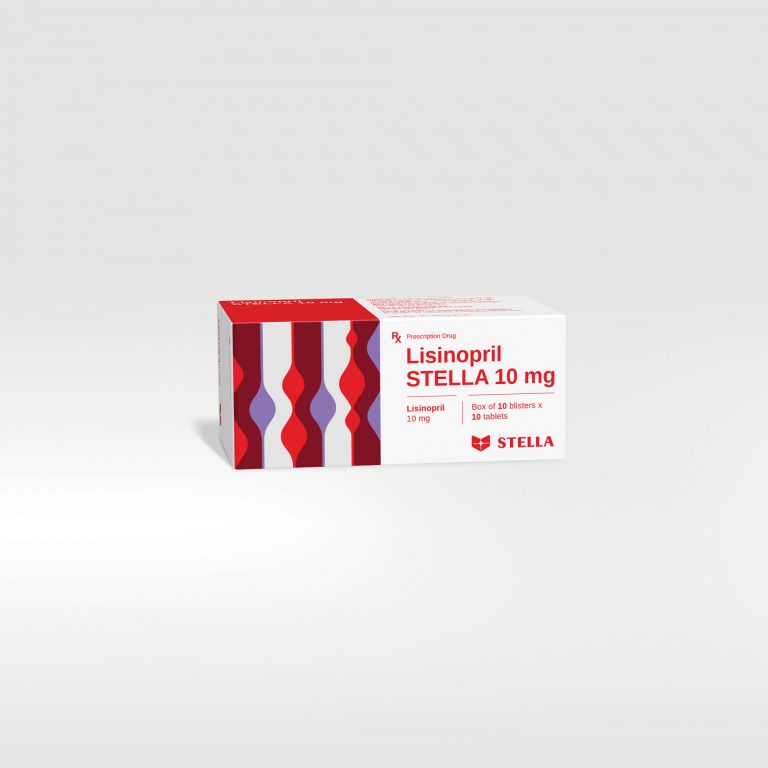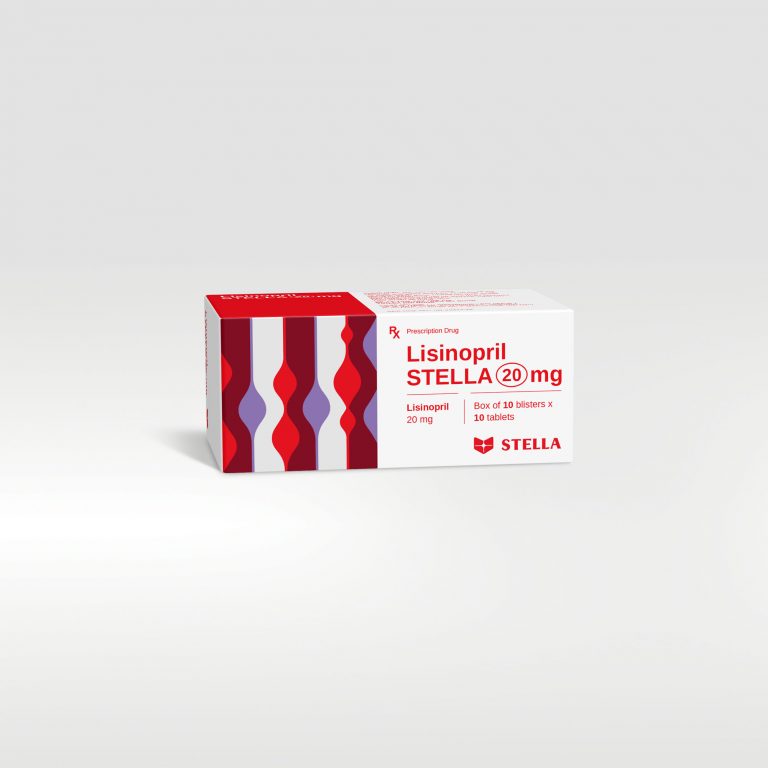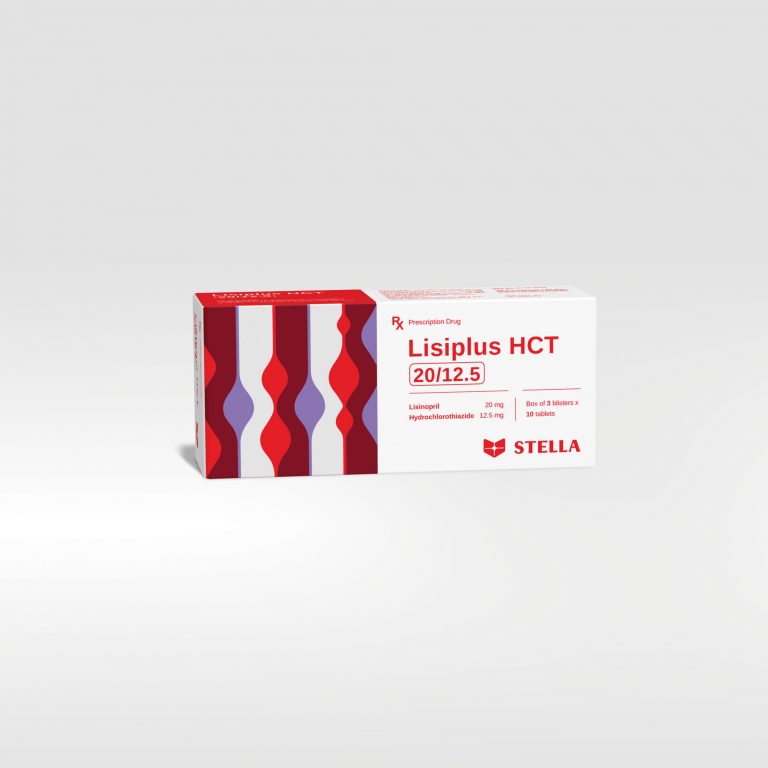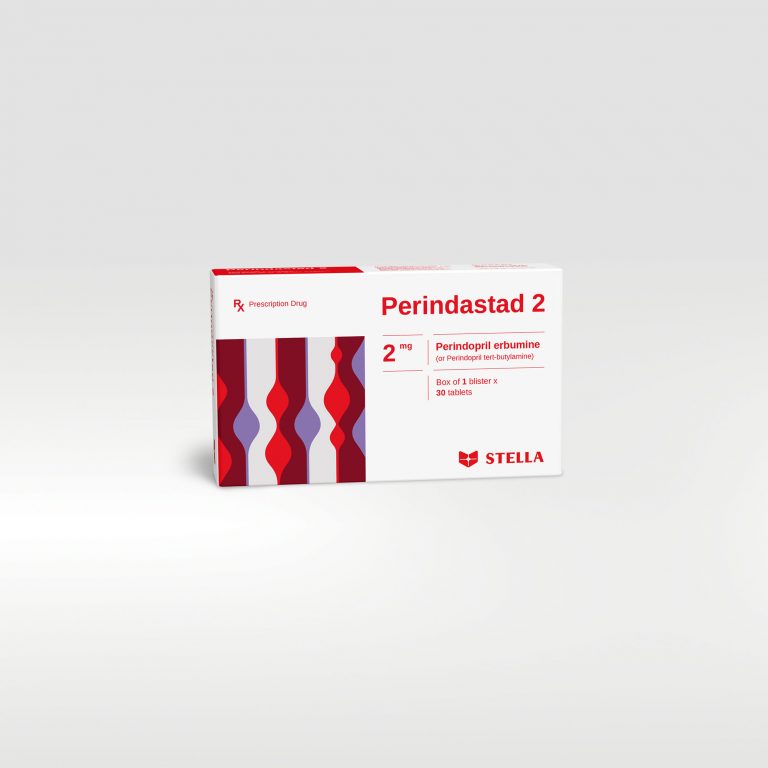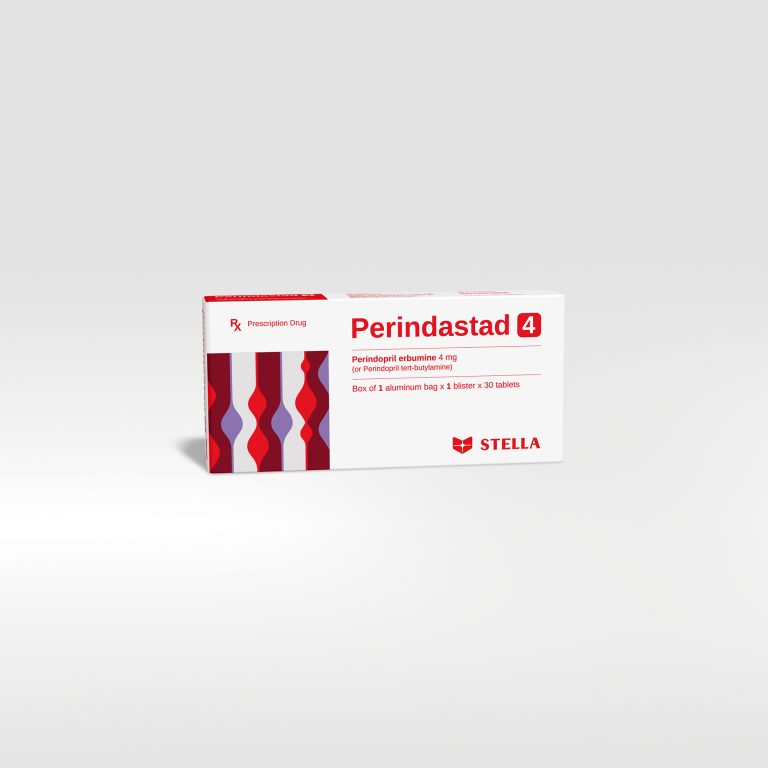Indications
- Enalapril STELLA 5 mg is used as monotherapy or in combination with other classes of antihypertensive agents to manage mild to severe hypertension.
- Enalapril STELLA 5 mg usually is used in conjunction with cardiac glycosides, diuretics, and beta- adrenergic blocking agents to manage symptomatic congestive heart.
- Prophylaxis in patients with asymptomatic left ventricular dysfunction to delay the onset of symptomatic heart failure and in patients with left ventricular dysfunction to reduce the incidence of coronary ischaemic events, including myocardial infarction.
Dosage
Hypertension: An initial dose is 5 mg daily. Patients with renal impairment or to those who are receiving a diuretic: an initial dose of 2.5 mg daily. The diuretic should be withdrawn 2 or 3 days before starting enalapril and resumed later if necessary. Maintenance dose: 10 – 20 mg once daily, maximum 40 mg daily.
Heart failure: Start with 2.5 mg daily. Maintenance dose: 20 mg daily as a single dose or in 2 divided doses, maximum 40 mg daily in 2 divided doses.
Asymptomatic left ventricular dysfunction: 2.5 mg twice daily and were titrated as tolerated to the targeted daily dose of 20 mg (in divided doses).
Patients with heart failure and renal impairment or hyponatremia: In patients with heart failure who have hyponatremia (serum sodium < 130 mEq/L) or with serum creatinine > 1.6 mg/dL, start at 2.5 mg daily under close medical supervision. Doses can up to 2.5 mg twice daily, then 5 mg twice daily and higher as needed, usually at intervals of four days or more if at the time of dosage adjustment there is not excessive hypotension or significant deterioration of renal function. The maximum daily dose is 40 mg.
Children:
- 20 – 50 kg: an initial dose of 2.5 mg once daily with a maximum of 20 mg daily.
- ≥ 50 kg: an initial dose of 5 mg once daily with a maximum of 40 mg daily.
- Enalapril is not recommended in neonates and in paediatric patients with glomerular filtration rate < 30 ml/min/1.73 m2.
Use of suitable tablet is 2.5 mg enalapril maleate when using 2.5 mg.
Usage
Enalapril STELLA 5 mg is administered orally.

